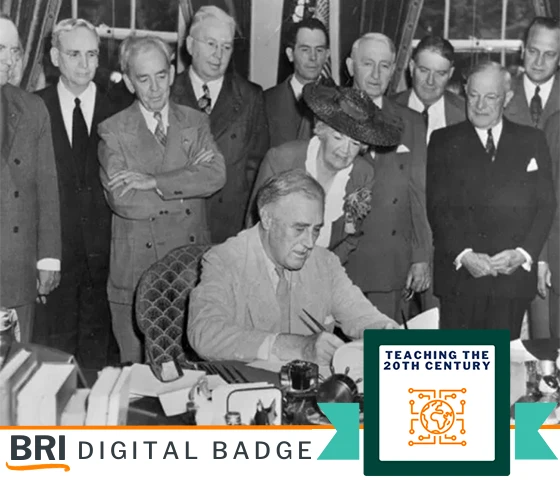
Teaching the 20th Century
TEACHING THE 20TH CENTURY

Introduction
Welcome to Teaching the 20th Century!
This course provides a content driven, yet thematic perspective into the 20th century. It uses case studies to explore a specific historical reasoning skill and constitutional principle(s). Each guiding question and case study will allow you to draw connections between events and topics throughout the curriculum and history.
Learning Objectives
Upon completion of this course, you will be able to:
![]() Analyze lessons and materials for the historical reasoning skills and constitutional principles represented.
Analyze lessons and materials for the historical reasoning skills and constitutional principles represented.
![]() Evaluate your own efficacy in supporting the development of historical reasoning skills.
Evaluate your own efficacy in supporting the development of historical reasoning skills.
![]() Evaluate your own efficacy in supporting education for self-governance.
Evaluate your own efficacy in supporting education for self-governance.
![]() Develop lessons that support historical reasoning and thinking skills.
Develop lessons that support historical reasoning and thinking skills.
![]() Develop lessons that support education for self-governance.
Develop lessons that support education for self-governance.
Instruction
Use the outline below to access the content for this module. Click the Mark Complete button at the bottom of each page to progress to the next step. You’ll automatically return to this page once you’ve achieved 100% of the steps for the module. At that point, please mark this page complete to signify your work is ready for review.
